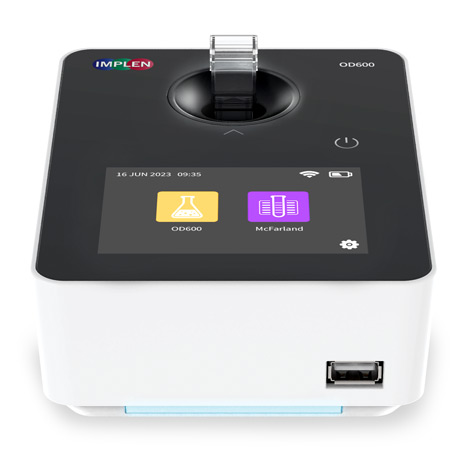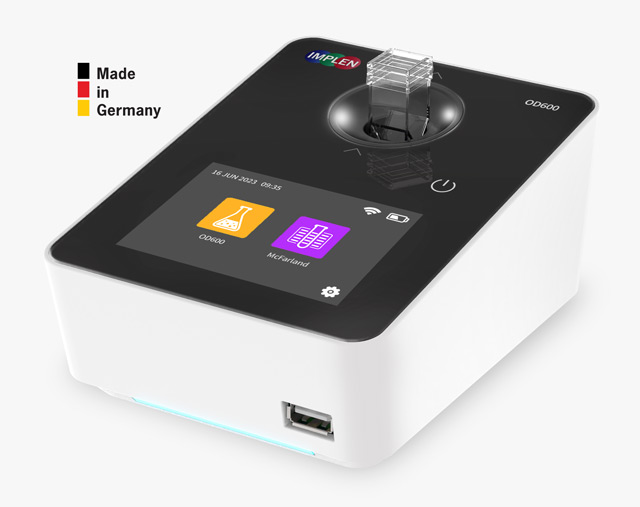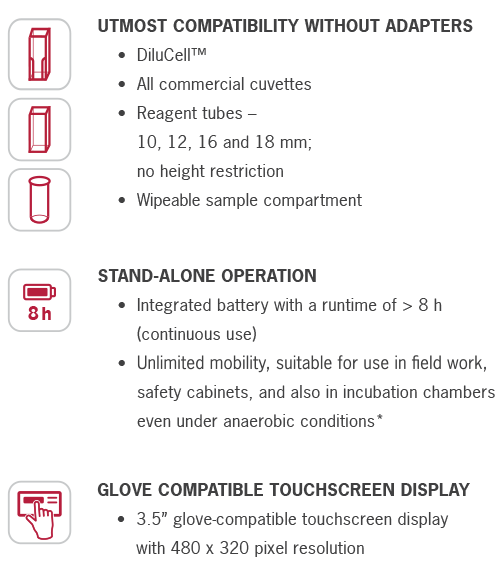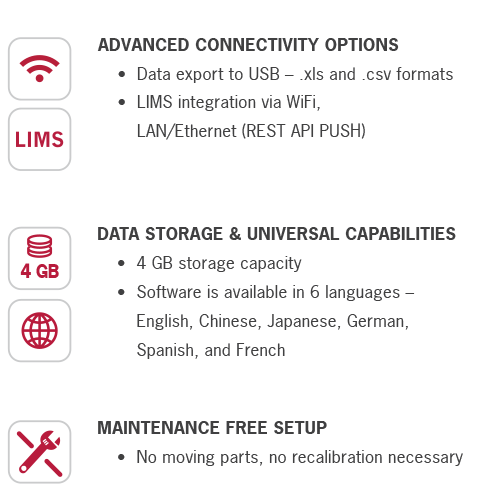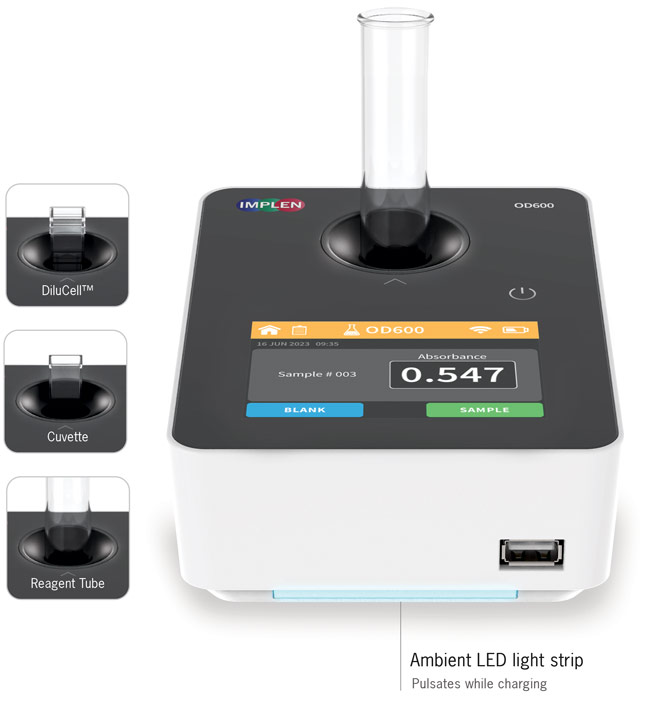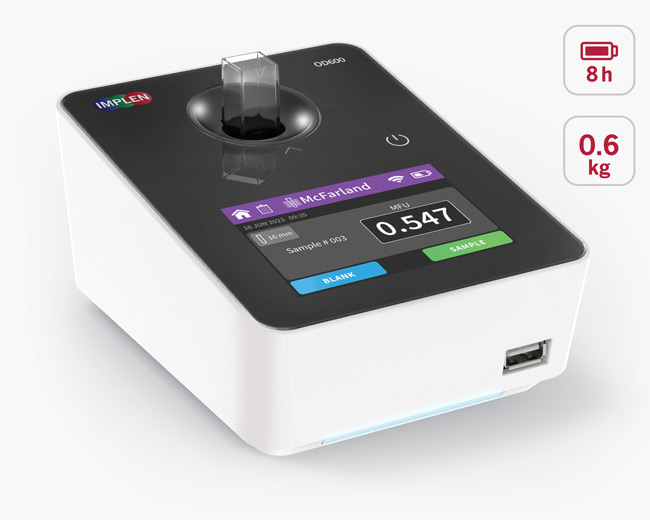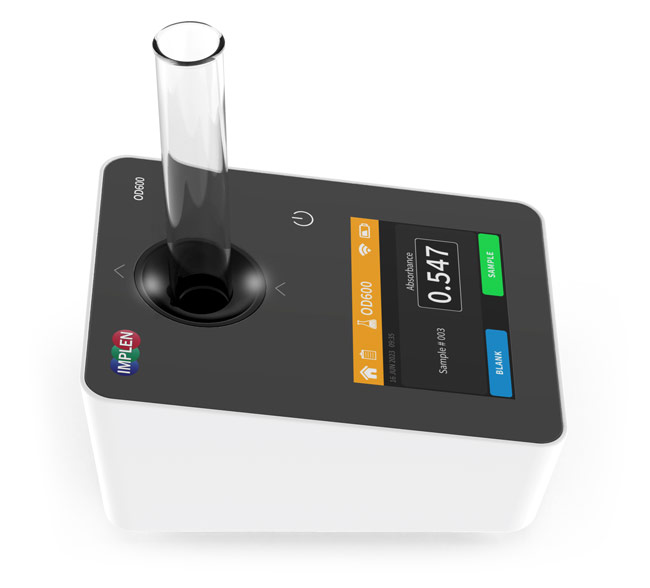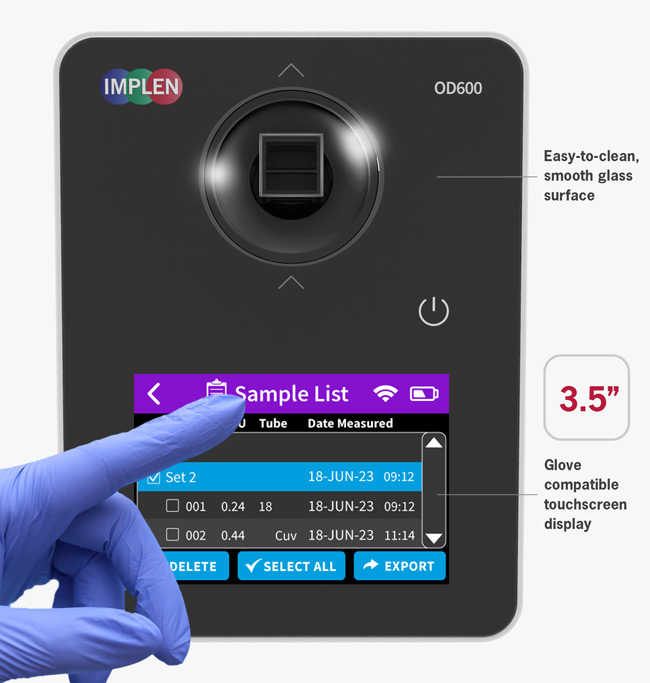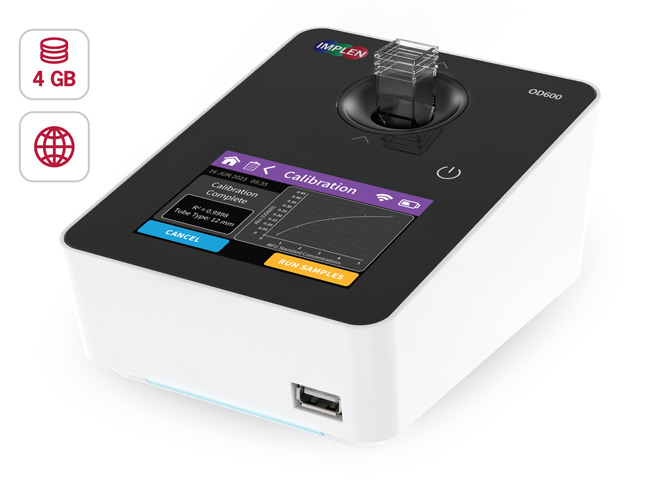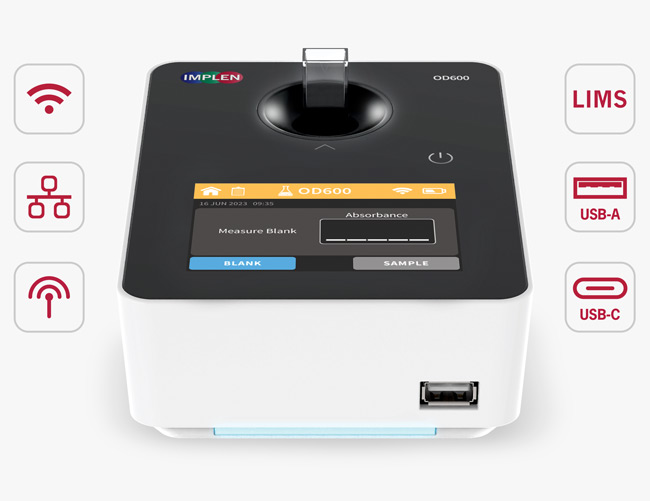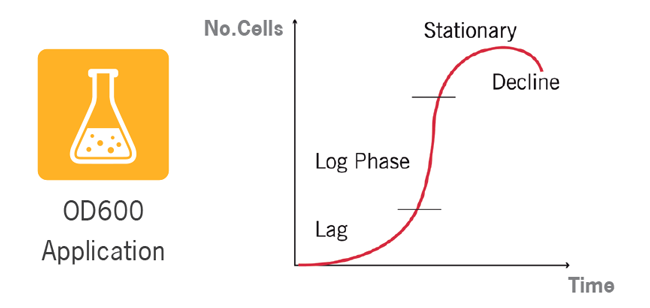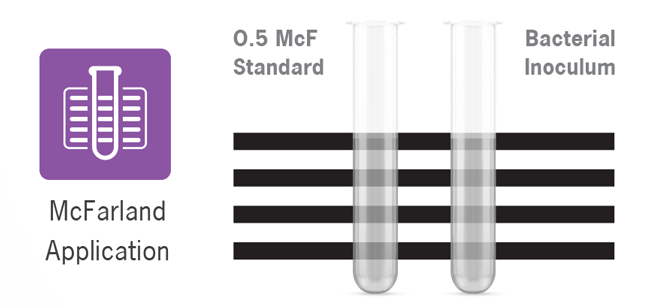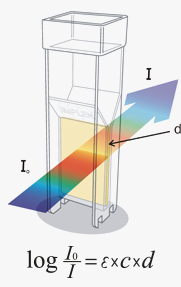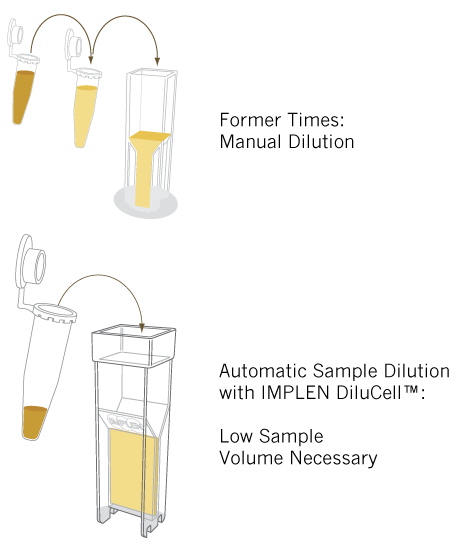Fast, easy, and accurate determination of cell density at 600 nm | Battery Powered (rechargeable)
User-Friendly, Robust, and
Globally Adaptable for Any Lab
The Implen OD600® is a user-friendly device for measuring sample optical density at ~600 nm, ideal for various applications including cell growth rates and McFarland turbidity measurements. It offers robust data management capabilities, and seamless integration into LIMS that has helped establish Implen as a premium supplier of laboratory instruments! With multilingual support and adaptable sample compatibility, the Implen OD600® is ideal for diverse laboratory environments worldwide.
User-Friendly Interface & Utmost Compatibility Without Adapters
The Implen OD600® features an intuitive, user-friendly interface based on the app system used in the NanoPhotometer® line. The device supports various cuvettes and test tubes without the need for an adapter, including DiluCells, 10 mm macro and semi-micro cuvettes, and 10, 12, 16, and 18 mm glass/falcon tubes.
Stand-alone, Lightweight and Portable
The Implen OD600® is a modern, stand-alone device with an integrated battery that offers over 8 hours of uninterrupted operation. It features both an external power adapter and an internal rechargeable battery.
Weighing only 0.6 kg and measuring 140 x 110 x 70 mm, this compact device is easily portable and fits any scientific setup. Its unlimited mobility makes it ideal for use in incubation cabinets and under anaerobic conditions.*
*Certain restrictions or limitations apply. Please contact Support.
High Precision & Versatile Measurement
Measures growth rates of diverse cell types using OD600 and McFarland methods. The photometric range covers OD600: 0 – 4 A and McFarland: 0 – 16 MFU.
Reliable and accurate measurements for various cell types, including E. coli and yeast, with an accuracy of OD600: @ 1A: < ±0.01 A and McFarland: @ 0 – 8 MFU: ≤ ±0.1 MFU.
Glove-Compatible 3.5″ Touchscreen Display and Easy Maintenance
Implen OD600® is user-friendly and easy to operate with a 3.5″ crevice-free, glove-compatible touchscreen with resolution of 480 x 320 pixels in various lab settings. The display features a smooth glass surface ideal for use in laminar flow or biosafety hoods. Additionally, the device can be used in incubation chambers and under anaerobic conditions.* The device is very easy to clean with water, ethanol, or other cleaning agents. The glass plate is completely wipeable, and the cuvette shaft can be wiped, ensuring easy maintenance and hygiene.
*Certain restrictions or limitations apply. Please contact Support.
Large Data Storage & Universal Capabilities
The device includes 4GB of internal storage for efficient data management, enabling access to all previously measured sample data through the sample list feature.
The Implen OD600® also features a multilingual interface accessible in English, Chinese, Japanese, German, Spanish, and French, catering to a global user base.
Effortless Data Export & Advanced Connectivity Options
The Implen OD600® instrument features simple data export via USB in .csv and .xls formats, with advanced connectivity options like USB C for charging and USB A port for data export. The device features LIMS integration via WiFi, LAN/Ethernet (REST API PUSH).
Implen OD600® Applications
Built-in Applications to Measure Bacterial Growth
The Implen OD600® device comes equipped with two built-in programs: OD600 and McFarland, complemented by a built-in Sample list function for effortless data management and export. The OD600 program enables the monitoring of bacterial growth in liquid culture media by measuring the optical density at 600 nm (OD600), crucial for determining the stage of growth and ensuring optimal harvesting conditions. With the McFarland program, users can estimate cell suspension density by comparing it to a series of standard turbidity solutions, simplifying tasks such as antimicrobial susceptibility testing and bacterial inoculum preparation. These built-in functions streamline the measurement process, providing accurate and reliable results for a variety of laboratory applications.
The Beer-Lambert Law and OD600
Experience the power of the Beer-Lambert Law with Implen’s advanced Optical Density (OD) measurements. This fundamental principle, also known as the Beer-Lambert Law, empirically links light absorption to sample properties, providing essential insights for microbiological research. OD measurements, synonymous with estimates of bacterial concentration, utilize this law to accurately gauge turbidity resulting from microbial growth in liquid cultures.
Our technology applies the Beer-Lambert Law with precision, ensuring accurate readings even at lower microbial densities. This capability enables scientists to monitor growth dynamics effectively, determining optimal harvesting times and enhancing experimental reliability in microbiological studies.
Automatic Sample Dilution
Previously it was necessary to use standard cuvettes with a volume of at least 1 ml and additionally to dilute the sample manually. DiluCell™ from Implen allows for lower sample volume requirements and provides automatic virtual sample dilution. Due to the unique design of DiluCell™ cuvettes, the light-path is reduced from the standard 10 mm to 1.0 mm (DC 10). According to the Lambert Beer Law, this shortened pathlength results in an automatic sample dilution by factor 10 (DC 10). Automatic dilution with DiluCell™ saves time and excludes dilution errors and cross contaminations.
The McFarland Method
The McFarland method is a widely recognized technique for estimating the concentration of bacterial suspensions by comparing the turbidity of the sample to a set of predefined standards. These standards, known as McFarland standards, are based on the light scattering properties of solutions with known bacterial concentrations. This approach provides a simple yet effective means of ensuring consistency and accuracy in microbiological experiments.
McFarland standards are crucial for various applications, including antimicrobial susceptibility testing, where precise bacterial concentrations are necessary to determine the efficacy of antibiotics. They are also used in the preparation of inocula for culture inoculation and other microbiological assays, ensuring that bacterial suspensions have a consistent and reproducible density.


